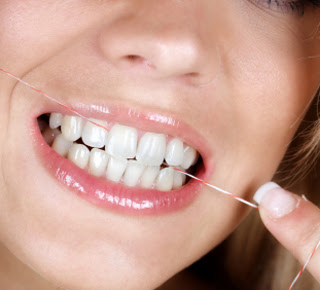Remember when you were a kid and your parents would ask, “Did you brush your teeth?” Of course, you said you did... a quick NOM NOM NOM on your toothbrush counts, right? Not really...
According to Michael Sesemann, DDS, president of the American Academy of Cosmetic Dentistry, two minute is the ideal brushing time. He often recommends people divide the mouth into quadrants and spend 30 seconds a quadrant.
Ok, so you’ve got two minutes to get your teeth sparkly clean. How are you going to get the most bang for your buck? The good, old-fashioned way, or is it time to go electric?
Many patients are now asking their dentists about these mechanical tools so much that the American Dental Association (ADA) has issued several news releases on the matter.
"If you are a wonderful brusher and a wonderful flosser (are you??) ... then the manual toothbrushes are just great," says Kimberly Harms, DDS, an ADA consumer advisor who is also a dentist in Farmington, Minn. However, she says powered devices can help people who have trouble physically moving their brushes around their mouth to clean all teeth surfaces. These may include anyone with a motor disability or arthritis.
If the increased amount of space taken up on store shelves is any indication, the electric brushes are growing in popularity. Some of them are kid-friendly: The toothbrush handle may take on the shape of a racing car or a mermaid or a cell phone, and its color may resemble army camouflage.
So is there a real difference? The two main types of power toothbrushes are electric and sonic -- the difference between the two really comes down to numbers.
Electric Toothbrushes: With 3,000 to 7,500 rotating motions a minute, electric toothbrushes are powered to replicate the motion of your hand -- doing the muscle work for you. The bristles on these toothbrushes either rotate or move back and forth to help remove plaque and reduce gingivitis.
 |
| Photo Credit: Kookl.com |
Sonic Toothbrushes: Offering 30,000 to 40,000 strokes per minute, sonic toothbrushes rotate in a back and forth vibrating motion. The rapid motion is the sonic toothbrushes' claim to fame. But ultimately, it also aims to remove plaque and keep teeth and gums healthy and clean.
Now, for the real difference: the old-fashioned way of brushing your teeth rings in about 300 strokes per minute -- if you brush properly. So over the two-minute recommended brushing time, your teeth are hit with 600 strokes … a far cry from the thousands you might get with the high-tech variety!
So, should you switch?
Well, you really can’t argue with the hard numbers and, according to one patient who has been using an electric toothbrush for more than seven years, she has been impressed with the results -- cleaner teeth and minimal plaque build-up, which translates into less scraping at her regular dental check-ups.
She hasn’t had a cavity since she made the switch from a hand-powered toothbrush, and her gums are in good shape. Although she can’t say for sure her pristine oral health is the result of her electric toothbrush, she’s not messing with success.







